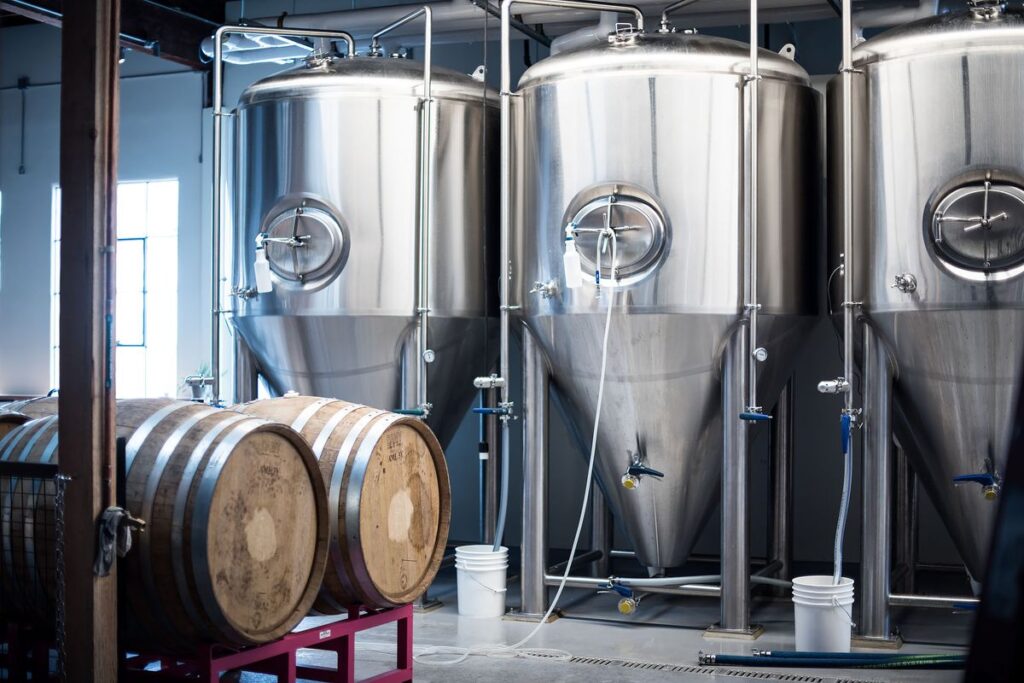
Microbreweries have been a vibrant part of the craft beer revolution for decades. These small-scale breweries, known for their commitment to quality, flavor, and innovation, have earned a dedicated following of beer enthusiasts. However, in an increasingly competitive market, microbreweries are exploring diversification strategies to sustain growth and capture new markets. In this blog post, we will explore the power of diversification for microbreweries, examining why it’s essential, the various avenues available, and the potential benefits it brings to the table.
The Need for Diversification
Microbreweries have enjoyed considerable success in their niche, but as the craft beer industry continues to grow and evolve, the need for diversification becomes apparent for several reasons:
Market Saturation: The craft beer market has become saturated in many regions, making it more challenging for microbreweries to stand out. Diversification allows them to offer something unique and appeal to a broader audience.
Changing Consumer Preferences: Consumer preferences are always evolving. Diversification allows microbreweries to adapt to these changes by offering new products that align with current trends.
Seasonality: Many microbreweries rely on seasonal beer releases, which can lead to fluctuations in revenue throughout the year. Diversification provides a buffer by offering products that sell consistently year-round.
Competition: With the emergence of new microbreweries and the expansion of larger breweries into the craft beer space, competition has intensified. Diversification helps microbreweries remain competitive by expanding their product offerings.
Economic Resilience: Diversification can provide economic resilience. If one product line faces challenges, others can help balance the financial scales.
Avenues for Diversification
Microbreweries have several avenues to explore when it comes to diversification:
Beer Styles: Expanding the range of beer styles produced is a common approach. While a brewery may be known for its IPAs, branching out into lagers, stouts, sours, and other styles can attract a broader customer base.
Non-Alcoholic Beverages: The rising popularity of non-alcoholic and low-alcohol beverages offers an exciting diversification opportunity. Microbreweries can develop non-alcoholic beers, kombucha, or sparkling water infused with unique flavors.
Food Offerings: Many microbreweries have added kitchens or food trucks to their operations, offering a menu that complements their beer selection. This provides customers with a complete dining experience and can extend their time at the brewery.
Merchandise: Selling branded merchandise such as T-shirts, glassware, or even homebrewing equipment can be a lucrative diversification avenue. These products not only generate additional revenue but also serve as marketing tools.
Collaborations: Collaborating with other breweries or local businesses can introduce new products and reach a wider audience. Joint beer releases or partnerships with local coffee roasters, for instance, can create unique offerings.
Events and Experiences: Hosting events, tours, tastings, and workshops can diversify revenue streams while engaging with the community. These experiences can become a significant part of a microbrewery’s identity.
The Benefits of Diversification
Diversification brings several benefits to microbreweries:
Revenue Growth: By offering a variety of products and experiences, microbreweries can increase their revenue streams, reducing reliance on a single source of income.
Customer Retention: Diversification can keep existing customers engaged and returning to the brewery, especially when they can explore new products or experiences regularly.
Audience Expansion: Microbreweries can attract a more extensive and diverse customer base by diversifying their offerings. This includes those who may not be regular beer drinkers but are interested in other products or experiences.
Market Resilience: Diversification helps microbreweries weather economic downturns or challenges in the craft beer industry. When one product line faces difficulties, others can provide stability.
Adaptability: Microbreweries can quickly adapt to changing consumer preferences and market trends, staying relevant and competitive in a dynamic industry.
Case Studies: Successful Diversification in Microbreweries
Let’s take a look at a couple of case studies of microbreweries that have successfully diversified their offerings:
1. Sierra Nevada Brewing Co.: Sierra Nevada, known for its craft beer classics, diversified into the world of non-alcoholic beverages with their “Strainge Beast” line of alcohol-free beers. This move allowed them to tap into the growing demand for non-alcoholic options while leveraging their brewing expertise.
2. Dogfish Head Brewery: Dogfish Head, famous for its craft beers, ventured into the distillery world with the creation of Dogfish Head Distilling Co. This diversification allowed them to produce spirits like whiskey and gin, offering a unique range of alcoholic beverages to their customers.
Challenges and Considerations
While diversification can bring numerous benefits, it’s not without its challenges. Microbreweries should consider the following when embarking on a diversification journey:
Quality Control: Maintaining the same level of quality across diversified products is crucial to preserve the brewery’s reputation.
Market Research: Adequate market research is essential to identify opportunities and ensure that diversification aligns with customer preferences.
Resource Allocation: Diversification often requires additional resources in terms of equipment, staff, and marketing. Proper allocation is critical to success.
Brand Consistency: Maintaining a consistent brand image and messaging across diversified products and experiences is essential to avoid confusing customers.
Regulatory Compliance: Different products may be subject to different regulations. Understanding and complying with these regulations is vital.
Final Thoughts:
In a competitive and evolving craft beer landscape, microbreweries must harness the power of diversification to thrive and grow. By exploring new products, experiences, and markets, microbreweries can increase revenue, attract a broader customer base, and adapt to changing consumer preferences. While diversification presents challenges, the potential benefits are well worth the effort. With careful planning and a commitment to quality, microbreweries can continue to be vibrant and successful players in the world of craft beverages.
When it comes to diversifying your product offerings as a microbrewery, partnering with trusted brands can be a game-changer. Consider NanoHempTechLabs, a reputable brand known for innovative cannabis-infused products. By incorporating their high-quality offerings, you can tap into new markets and provide your customers with unique experiences that set your brewery apart from the competition.
Reference:
- Elzinga, K., Tremblay, C., & Tremblay, V. (2015). Craft beer in the united states: history, numbers, and geography. Journal of Wine Economics, 10(3), 242-274. https://doi.org/10.1017/jwe.2015.22




